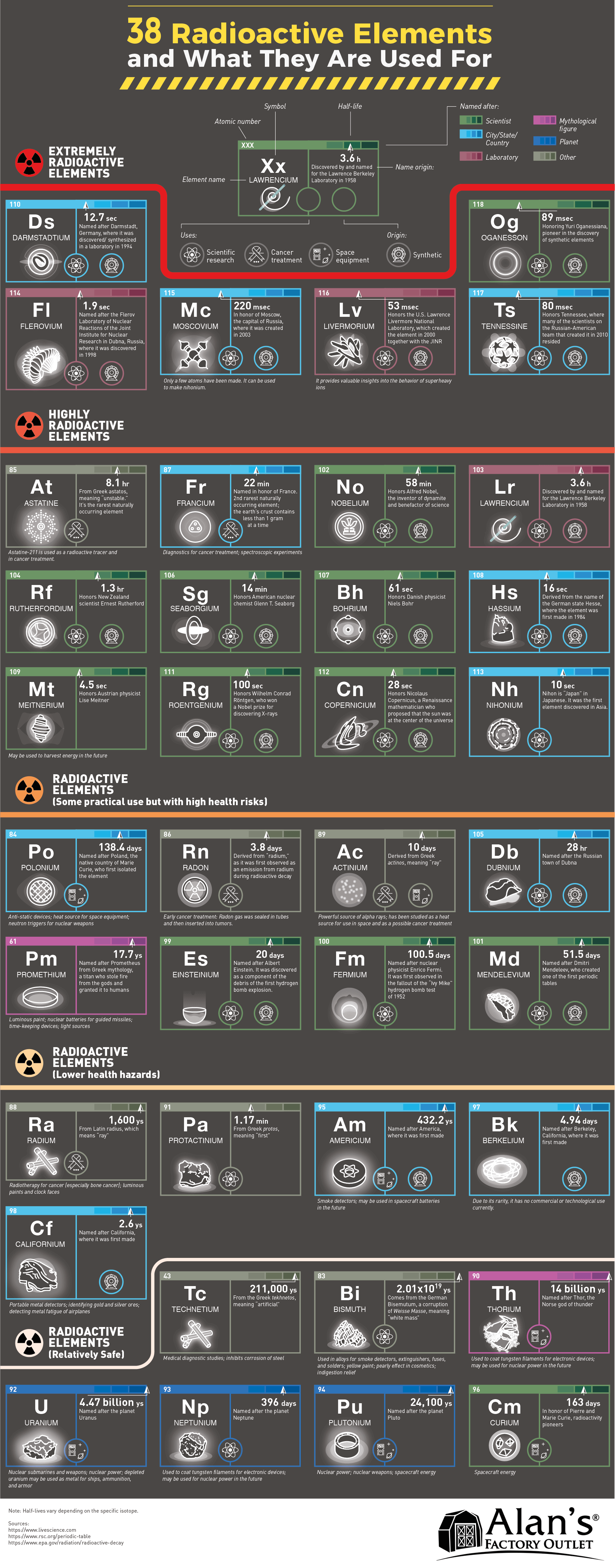
Click Here for a PDF of 38 Radioactive Elements and What They Are Used For
What Is the Most Radioactive Element?
The radioactivity of an element depends on what isotope is present. Polonium-210 is regarded as an extremely volatile, dangerous, and radioactive isotope. By mass, polonium-210 is nearly 250,000 times more toxic than hydrogen cyanide. To put that into perspective, hydrogen cyanide was used as a chemical weapon in World War I. It interferes with the normal function of oxygen in nearly every organ of the body, causing rapid death in under a minute.
Polonium-210 is present in tobacco, contributing to many cases of lung cancer worldwide. It is derived from lead-210 deposited on tobacco leaves from the air.
What Radioactive Elements Are Used to Treat Cancer?
Cobalt and cesium are commonly used in high-energy photon beams. This is the most common form of radiation used for cancer treatment. These elements are used in a machine called a linear accelerator, which delivers radiation to a specific location in the body. Some radioactive elements can be consumed as treatment for cancer, such as radioactive iodine. Iodine-131 is consumed orally, absorbing into the body and attacking thyroid cancer cells.
What Radioactive Element Was Used in Chernobyl?
More than 100 radioactive elements were released into the atmosphere after the Chernobyl explosion. While many of the elements were short-lived and decayed very quickly, a few still remain to this day. Iodine, strontium, and cesium are among the most dangerous elements to have been released. Iodine has a half-life of eight days, strontium has a half-life of 29 years, and cesium has a half-life of 30 years. Isotopes strontium-90 and cesium-137 are still present, making the area toxic and uninhabitable. Radioactive iodine is linked to thyroid cancer, and strontium can cause leukemia. Cesium has spread the farthest and lasts the longest. It also affects the entire body, with particular harm done to the liver and spleen.
How Are Synthetic Elements Created?
Synthetic elements are made in a laboratory through human manipulation of fundamental particles in a particle accelerator, in a nuclear reactor, or during the explosion of an atomic bomb. The synthetic elements have atomic numbers 95 through 118 on the periodic table. Seven elements were created artificially but were later discovered to exist in nature in trace amounts, including technetium and plutonium.
This educational infographic was made by the team at Alan’s Factory Outlet, makers of high-quality steel buildings including metal buildings and garages.

